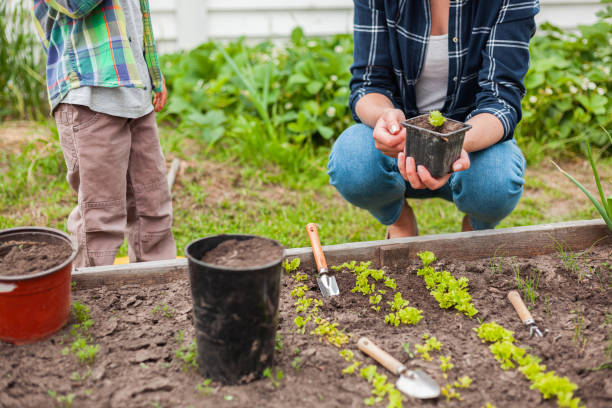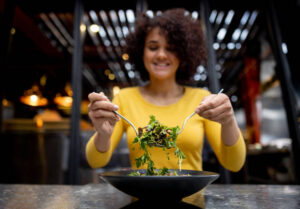A simple and effective way to reduce environmental impact is to create a sustainable garden at home or in your local community. There’s nothing like raiding your veggie patch for dinner each night – it’s a great feeling when you grow your food. The food will also taste fresh and pesticide-free.
Gardeners have been talking about sustainable gardening techniques for some time now. It is sustainable to grow your vegetables and fruits, but you can go one step further. The best way to reduce food waste is to grow your food from scraps through sustainable gardening practices.
Table scraps make great new products, but it can be tough to know where to start. Read on to learn how to have homegrown food through organic farming.
What is Sustainable Gardening?
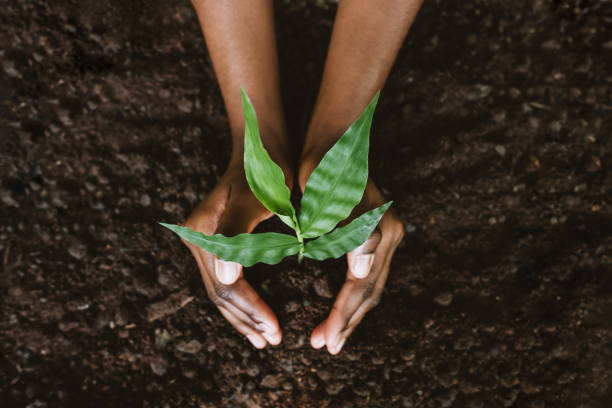
Sustainable gardening practices combine processes of organic farming with the conservation of natural resources. Gardening and sustainability consists of the following key elements:
- Thinks ahead
- Supports ecosystems
- Maintains a minimal environmental impact
- Collaborates with nature rather than against it
Why is Sustainable Gardening Important?
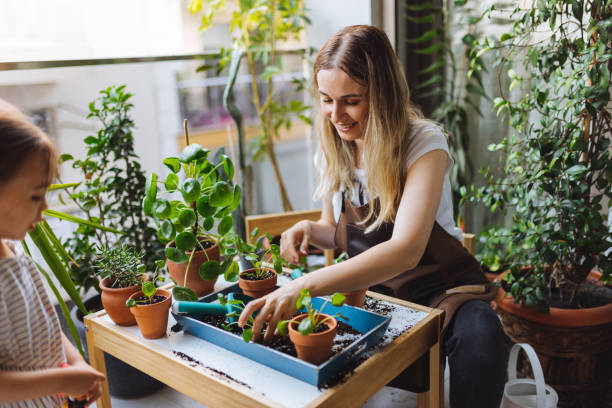
There are many reasons why zero-waste gardening is a great way to include eco-friendly living into your life. You are using fewer resources and emitting fewer emissions when you grow organic foods. From farm to plate, food travels an average of 1,500 miles in the United States.
It doesn’t even take into account the resources used to plant, grow, control pests, and harvest crops. You can eliminate all of that by using sustainable gardening tips to grow your food at home.
Secondly, by reducing food packaging, you’re reducing individual waste, which accounts for a lot of materials. It also helps with zero-waste meal planning.
Thirdly, you can decide whether or not to use fertilizers, pesticides, and herbicides on your plants since you control and know exactly what has been added to your food.
Sustainable Gardening Ideas for Beginners
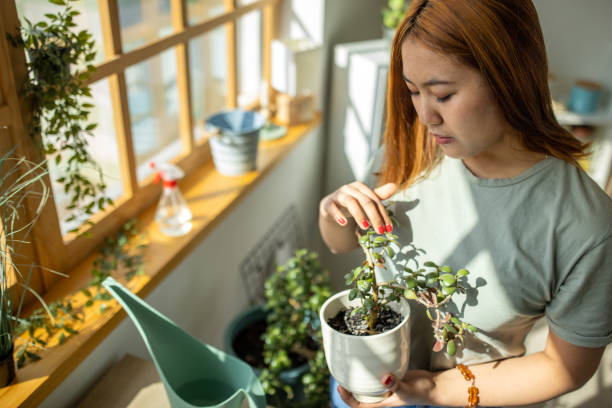
It may seem intimidating to plant your food; after all, you need space, sun, and good soil. However, gardening can be as simple as planting a few cherry tomatoes on a patio or creating a herb garden. You can’t beat fresh, home-grown foods when you water, weed, and harvest them daily.
The key to successfully creating homegrown food is to have a plan. Luckily, we’ve got a complete beginner’s guide to help you get your garden plot up and running.
Make sure you plan out your summer gardening plan this winter (it’s better to start earlier before the gardening season starts) and by summer, you’ll be surrounded by veggies – or maybe herbs throughout your apartment.
So, let’s dive into it.
1. Know your space
Understanding your space is the first step to creating a healthy garden plan. While you may want a full-blown garden, do you have plenty of sunlight, steep slopes, or roots that cling to trees in your backyard?
When choosing a garden space, there are many factors to consider. For a garden to thrive, it needs to have excellent soil, at least six hours of direct sunlight a day, and enough space for the plants to grow.
Additionally, you can ensure the soil is healthy and provides the essential nutrients by conducting a soil test beforehand. Agricultural colleges may offer soil test kits for sale online or for purchase.
Use these factors to determine your growing area:
- Sunlight: As your crop grows during its peak season, you need to realistically assess the available sunlight. In late spring to early autumn, you will have limited options when you don’t have at least four to five hours of good sunlight every day.
- Eco-friendly pest control: The key to pest control is also becoming familiar with nontoxic methods. Home remedies work well in some cases. Conscious gardening avoids the use of chemical pesticides and fertilizers.
2. Consider your goals
Considering your eco-gardening goals will also help you determine the size of your space. Decide how much money, time, and effort you are willing to invest in your plot.
A first-time gardener may start small and add more in later if things go well; some plants are more maintenance-intensive than others. This leads us to the next point.
3. Begin small
Start by planting in small containers or raised beds to get a hang of it. Determine the types and numbers of vegetables, herbs, and fruits you will grow. Some herbs and leafy greens can tolerate part shade, but most vegetables and fruits require full sunlight.
Next, decide where to grow the plants. Make sure that your plants are appropriate for the amount of light and space you have available. Using pots to grow plants vertically on walls, fences, and posts can save space in your garden.
4. Compost food waste
Using compost as organic fertilizer is a great way to reduce waste and keep gardens sustainable. Composting in the garden recycles organic waste, including food.
Compost leaves, flower heads, and trimmings for nutrient-rich, organic fertilizer instead of throwing them away. As a result, the soil becomes richer in nutrients and vegetables become healthier and more delicious.
To grow organically and live sustainably, you must make your compost. You can also reduce waste at home by composting leftover foods, garden wastes, and other biodegradable materials.
Read More: A Beginner’s Guide to Composting: Turning Waste into Nutrient-Rich Soil
5. Don’t waste water
By collecting rainwater with water butts, sustainable gardeners conserve scarce resources. They can use this to water their plants and flowers. The ultimate goal of a sustainable gardener is to use natural water sources as much as possible.
Eco-friendly gardeners should use watering cans to water their gardens rather than automated systems like lawn sprinklers in areas where water is scarce. Even though the latter is faster, it also wastes a lot of water.
Also, water less. Water conservation is an integral part of sustainability, especially in water-scarce regions. The method of xeriscaping involves planting drought-tolerant shrubs and perennials to reduce the need for watering.
6. Grow native plants
Plants that naturally grow in your area are known as native plants. Because they are already adapted to rain, soil, and climate, these plants can grow more efficiently.
It is easier to maintain and grow native plants because they require less effort and water. Additionally, native plants provide food and shelter for insects and birds in your area, which helps protect them.
7. Plant water-saving, high-resilience plants
A sustainable garden does not have to contain only native plants. Planting high-tolerance plants that require less maintenance and water can also help conserve resources while having a beautiful garden. A beautiful, climate-friendly garden would benefit from plants such as honeybush and Monterey cypress.
8. Don’t use herbicides
The best way to maintain a healthy garden is to use sustainable methods. For weed and pest control, use organic methods rather than chemical herbicides. Besides being greener, pulling weeds yourself also provides a brief burst of exercise.
9. Mulching
Mulching helps hold moisture in the soil as well as restrict weeds from growing in your garden. There is a special need for this when there are water restrictions. Mulch your garden beds and landscape plants with a layer of 2 to 3 inches.
There are several options for mulching in sustainable gardening, such as pine needles, cocoa bean hulls, grass clippings, and shredded bark.
The benefits of mulching include:
- Keeps soil moist
- It suppresses weed growth
- Maintains a moderate soil temperature
- Improves soil compaction
- Provides nutrients to the soil
- Reduces erosion
- Enhances the garden’s ambiance
Plants can be mulched immediately after planting, but bare soil in the garden can also be mulched. A sustainable garden relies heavily on this technique.
10. Save seeds
Vegetables and flowers will produce seeds when they are ripe. Keep these seeds cool and dry after collecting them. It will be possible to use them next spring. Tomatoes, peas, beans, and peppers are good starter plants because their seeds are easy to store.
11. Don’t remove roots
You can leave the roots of old plants or old vegetable plants in the ground if you’re clearing out old or overgrown plants. Just chop off the plant’s top.
Roots provide microbes with food, which is why they are so important. As a result, you’ll be able to grow things the zero-waste way with less waste and keep nutrients in the soil.
Chop and drop is also a good tip. By chopping up the roots of old plants and spreading them back over the ground that you’ve just cleared, you’re simply able to fertilize it once you’ve cut back the old plants.
In addition to providing food for your soil, this will also decompose pretty quickly. Alternatively, you can also compost it if you don’t wish to do this.
12. Fertilize with resistant weeds
Bindweed and nettles are perennial weeds that are a gardener’s worst nightmare. However, you can use these types of weeds as a fertilizer for your soil if you soak them in water for a few weeks.
To keep the smell from spreading, put all the weeds in a bucket and cover it. Fill with water and cover. Drain after 2 weeks. Use the water from the compost to water your beds after you compost the leaves and weeds.
13. Transplant
In a short period, a lot of seeds can germinate and overcrowd. Transplant the healthiest-looking leaves when the second pair emerges.
Transplanting is relatively easy at this stage since the roots are very small. Do not hold the roots of the plant; always hold it by the leaves. As seedlings have used up their nutrients, place them in pots filled with nutritious soil (sand and compost work well).
Cutting the old toilet roll or plastic milk container in half makes a great pot for your plants. Allow the pots to grow for 15cm in a warm, sunny location. Plant them directly into their growing beds after preparing them.
14. Produce your food
You can grow delicious, satisfying, and easy vegetables, fruits, and herbs. Besides, growing your food plays an important role in living a sustainable lifestyle. Plant intensively and according to the season for a successful vegetable garden.
Sprouting crops, such as lettuce and greens, occur quickly in spring, but they die out in the summer. Interplanting hot-weather crops like tomatoes and peppers in beds is an option. The same area can be sown with warm-weather crops again when the autumn temps cool down.
15. Join a garden community
You might also consider joining a community garden near you if you want to expand beyond apartment gardening. The garden will not only give you the space, but it will also give you access to a network of other gardeners who can provide useful tips on growing conditions and other gardening tips.
Growing food in a small city space can be very rewarding whether you work indoors, outdoors, or both.
The Benefits of Sustainable Gardening

Sustainable gardening practices are eco-friendly for several reasons. Growing food ourselves reduces our dependency on industrial agriculture, which uses harsh pesticides, emits greenhouse gases, and wastes water.
In addition to reducing the use of harmful chemicals, we can also promote biodiversity by cultivating our vegetables, fruits, and herbs.
Zero-waste gardening also helps in removing CO2 from the atmosphere. As a result of photosynthesis, plants absorb greenhouse gases (such as carbon dioxide) and convert them into oxygen. Our gardens play a role in combating climate change by planting and nurturing a variety of plants.
Bottom Line
Take risks; don’t be afraid of making mistakes! You’ll have more success in certain years than in others with gardening, and it’s all about trial and error. Start small and don’t go big. Try planting a few things if this is your first year.
There is more to zero-waste gardening than just a theory. You should treat your contributions and your use with care and consideration. You start a zero-waste lifestyle as soon as you begin growing your food. Watching life emerge from the earth is a very fulfilling activity. By exercising and eating the fruits of your labor, you will also become healthier.

